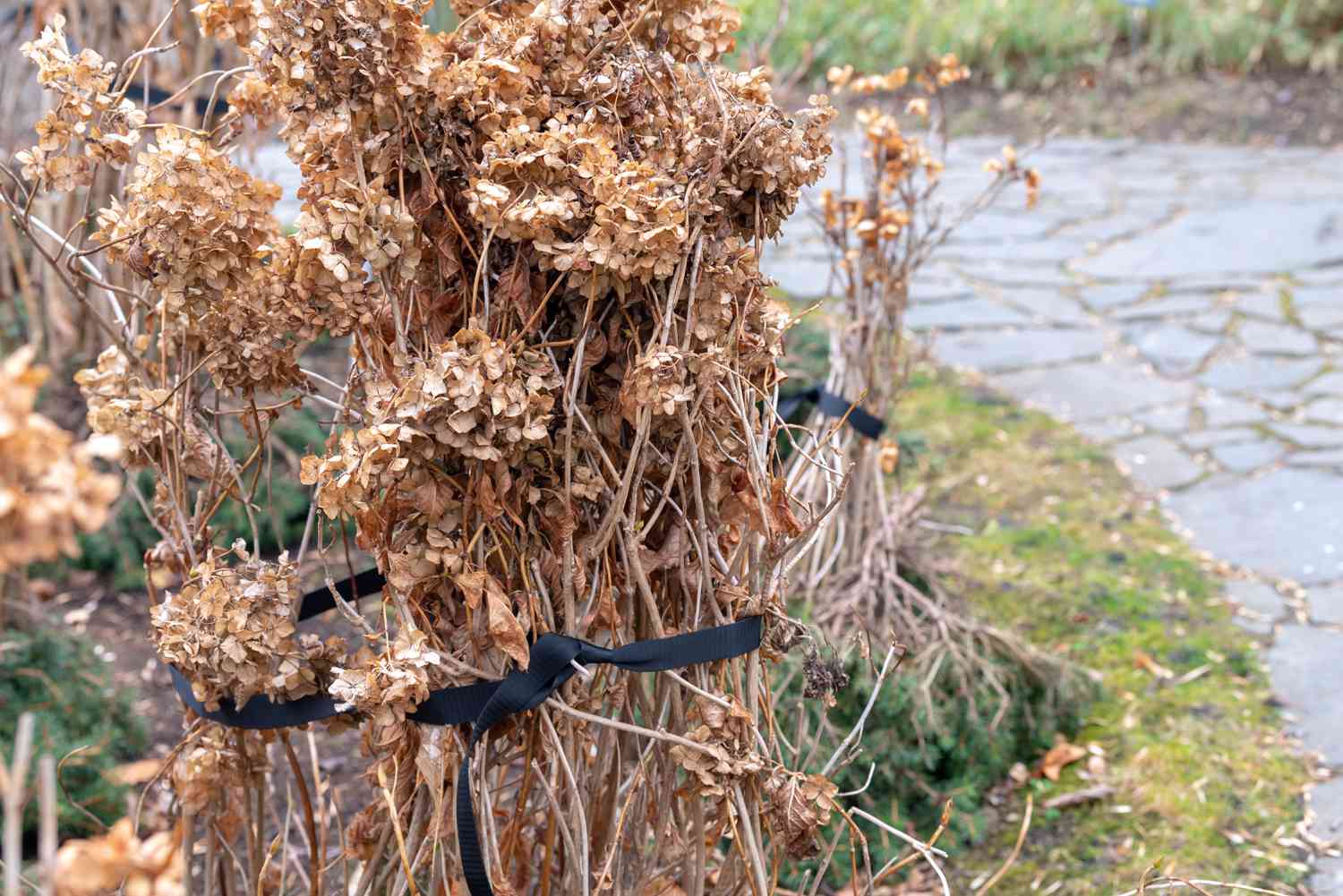Hydrangeas have big, bold leaves and large clusters of long-lasting flowers in white, pink, red, or blue blooming in late spring or summer. Flower clusters may contain sterile flowers which are conspicuous, with large, petal-like sepals, or fertile flowers with small, starry petals. They might also feature a cluster of small fertile flowers surrounded by a ring of big sterile ones called lace-cap hydrangeas. Sterile flowers last for a long time (often holding up for months), gradually fading in color. Hydrangeas are good-looking as single plants, massed, or in tubs on the patio. Grow quickly and easily in rich, porous soil. All parts of the hydrangea plant are poisonous to cats, dogs, and people, so do not consume these flowers. Some symptoms include nausea, vomiting, and skin dermatitis or irritation.
Plant Attributes
| Common Name | Bigleaf Hydrangea, French Hydrangea, Lacecap Hydrangea, Hortensia |
| Botanical Name | Hydrangea |
| Family | Hydrangeaceae |
| Plant Type | Perennial, Shrub, Deciduous |
| Mature Size | 2-8 ft. tall, 2-6 ft. wide |
| Sun Exposure | Full, Partial |
| Soil Type | Loamy, Clay, Moist but Well-drained |
| Soil pH | Acidic (6.0-6.5), but depends on the variety |
| Bloom Time | Spring, Summer, Fall |
| Flower Color | Pink, Green, Blue, Purple, White |
| Hardiness Zones | Zones 3-9 (USDA) |
| Native Area | Americas, Asia |
| Toxicity | toxic to people, toxic to cats, toxic to dogs |
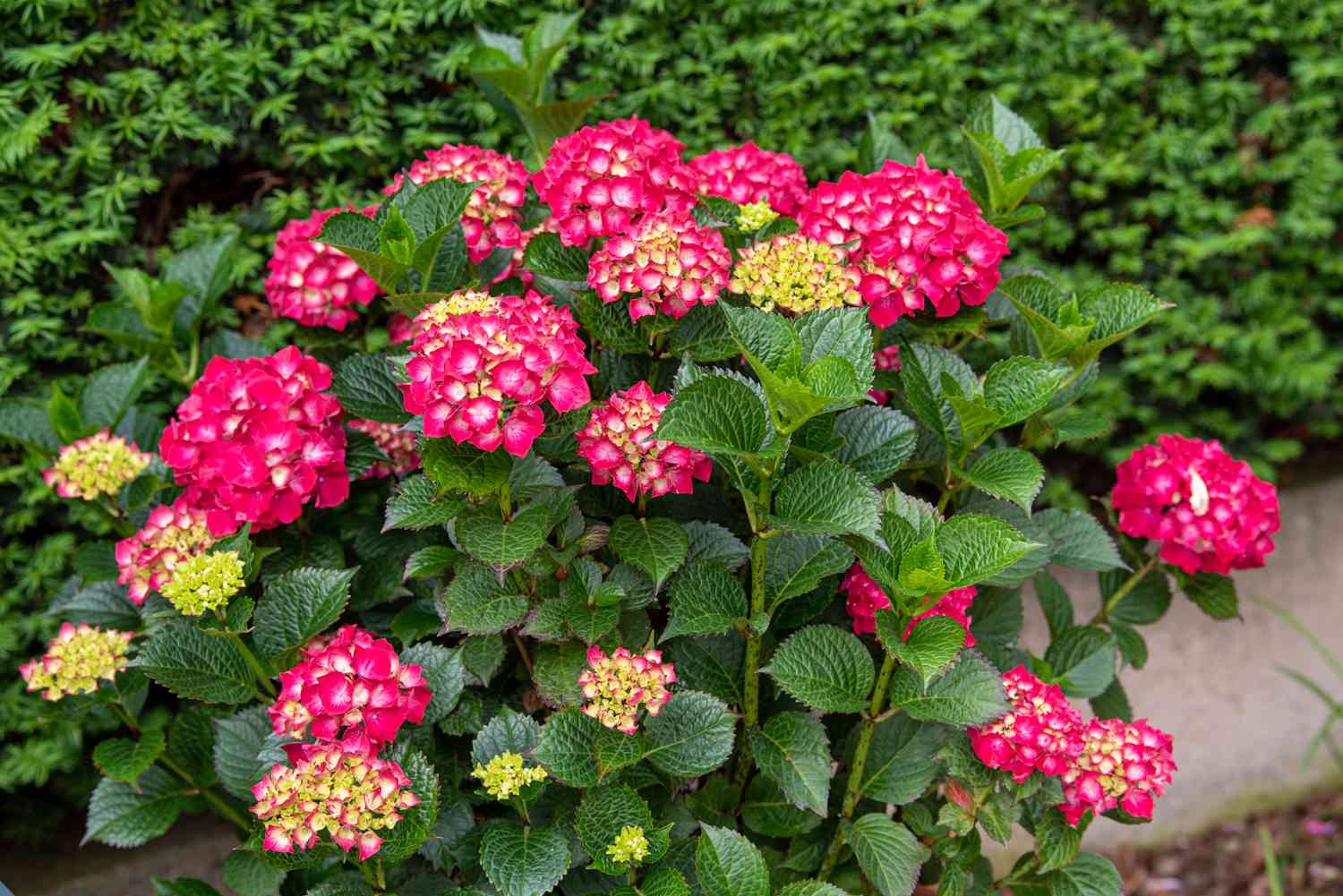
Hydrangea Care
Plant hydrangea plants in an area with full morning sun and partial sunlight after midday to protect them from the afternoon heat. While hydrangeas will adapt to most soils, the pH can impact the color and intensity of the plant’s blooms, depending on its variety. Keep hydrangeas well-watered and add a lot of organic compost to help fertilize this shrub with large, showy flowers. Hydrangeas are not known to be invasive plants.
Light
If planting hydrangeas in full sun, be sure to maintain a proper watering schedule so these shrubs will not dry out during the summer. It is best to grow hydrangeas in an area that receives morning sun and afternoon shade.
Soil
In some hydrangea selections, blue or pink flower color is affected by soil pH—the bluest color is produced in strongly acid soils (below pH 5.5), pink or red in neutral to alkaline soils (pH 7.0 and higher). Florists control the flower color of potted hydrangeas by controlling the soil mix. Blue-flowered florists» plants may show pink blossoms when planted in less acidic soil. Maintain blue flowers by applying aluminum sulfate to the soil, keep it red (or pink) or make it redder by «liming the soil» or using superphosphate in quantity. Flower-color treatment is not effective unless started well ahead of bloom time.
Water
Give hydrangeas a deep soak once or twice a week so that it reaches the roots. It is essential to water regularly during the first few years after planting. Generally, during the growing season, you should water hydrangeas with at least one inch of water every week, in addition to supplemental watering for new plants or during a drought. Water the plant’s base or roots instead of the flowers and leaves—This helps to prevent diseases from forming on the leaves. Different varieties, like Bigleaf hydrangeas, will need more water.
Temperature and Humidity
Hydrangeas grow best in climates with moderate humidity and temperatures—typically around 50°F to 60°F—under 80°F is best. The afternoon sun is too much light for hydrangeas, so find an area where it will receive partial sunlight, usually around six hours of morning sun daily, and then rest in the shade. Hydrangeas also need protection from harsh weather conditions like high winds or storms.
Fertilizer
Supplementing hydrangea growth with a highly organic fertilizer around the roots can help promote healthy blooms, but these shrubs do not require a lot of fertilization. The plant variety will indicate whether it is necessary to use a fertilizer, as some have different times of the year when it is best to use this supplement.
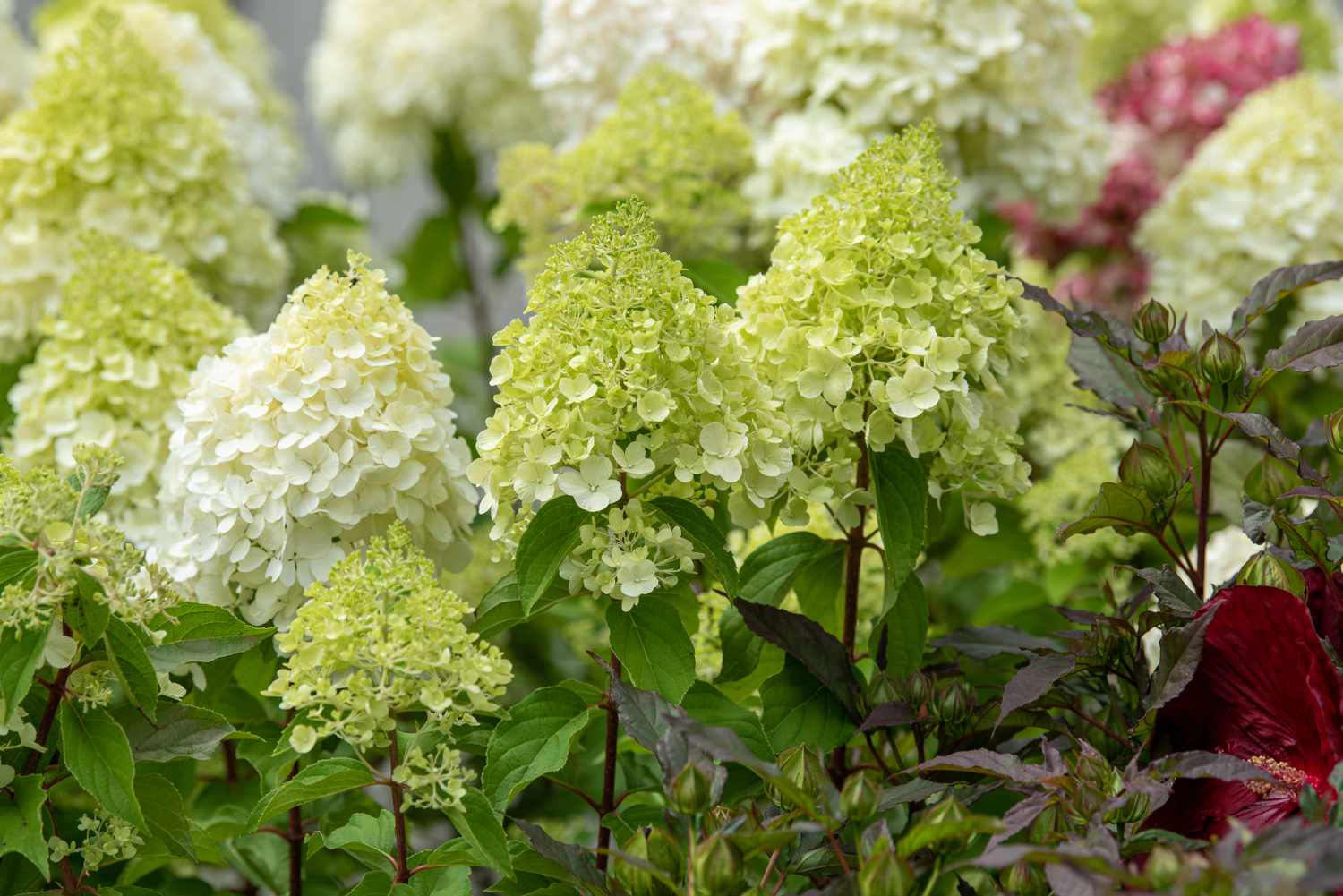
Types of Hydrangeas
There are over 75 species of flowering hydrangeas, but here is a list of a few and the characteristics most associated with them.
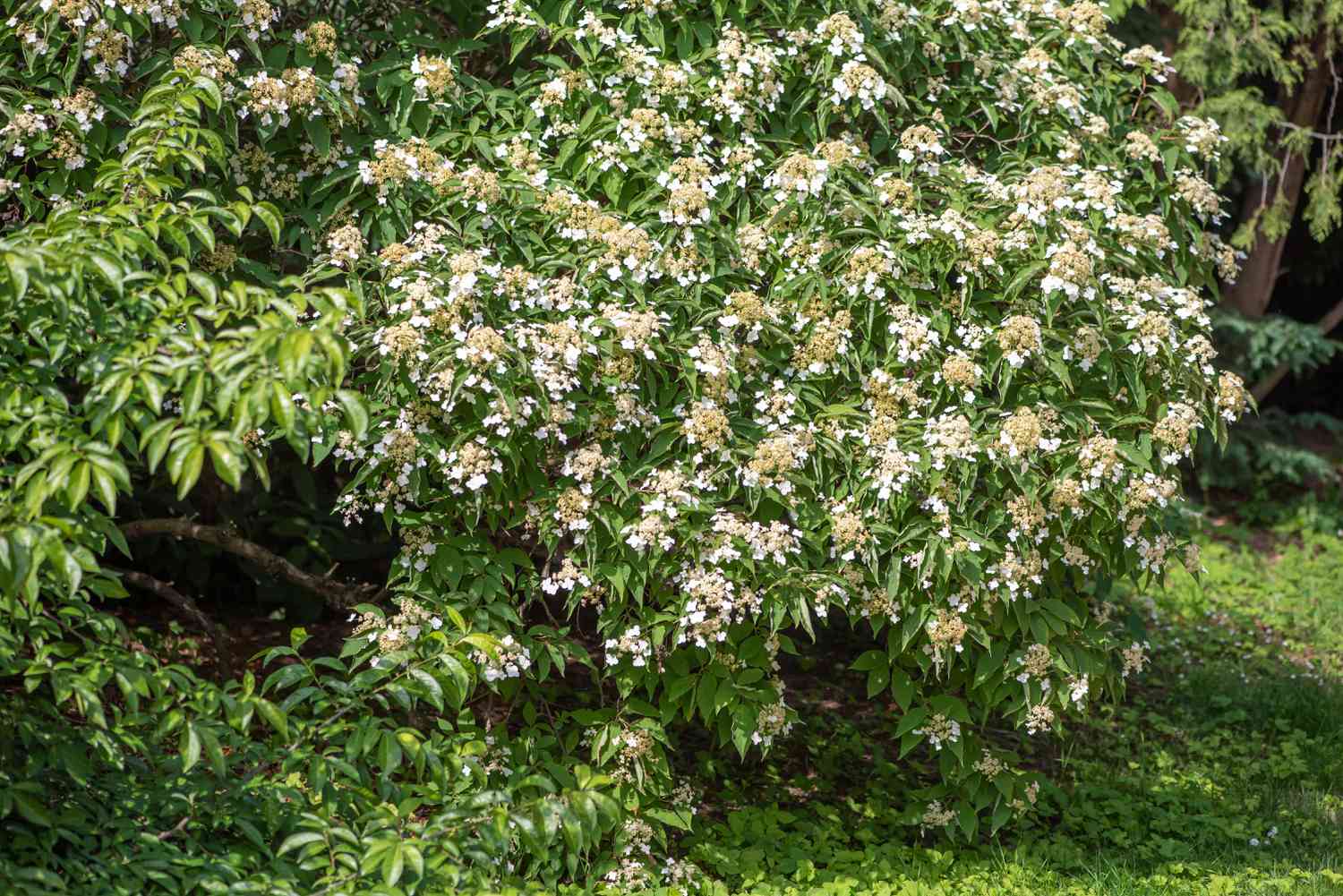
H. anomala petiolaris: Climbing Hydrangea. Deciduous vine. Zones US, MS, LS; 9–1. From Russia, Korea, and Japan. Climbs high (as far as 60 ft.) by clinging aerial rootlets—shrubby and sprawling without support. Green, two to four-inch long leaves have a rounded heart shape. Mature plants develop short, flowering branches with flat, white, six to ten-inch wide lace-cap flower clusters. It becomes woody with age. Prune out overly vigorous growth only after the vine is well established and climbing. Rejuvenate by cutting back to the framework late in the dormant season.

H. arborescens: Smooth Hydrangea. Deciduous shrub. Zones US, MS, LS, CS; 9–1. Native from New York to Iowa, south to Florida, and Louisiana. Upright, dense growth is 10 feet tall and wide. Oval, grayish green, four to eight-inch leaves with white flowers. In basic species, most flowers in a cluster are fertile. The few sterile ones are not plentiful enough for a full lace-cap effect. Much showier is «Annabelle,» which produces enormous (up to one foot) globular clusters of sterile flowers on a plant about four feet tall and wide. «Grandiflora» is another four-footer, and its flower clusters are six inches across. Prune in late winter. Hard pruning produces bigger flowers.
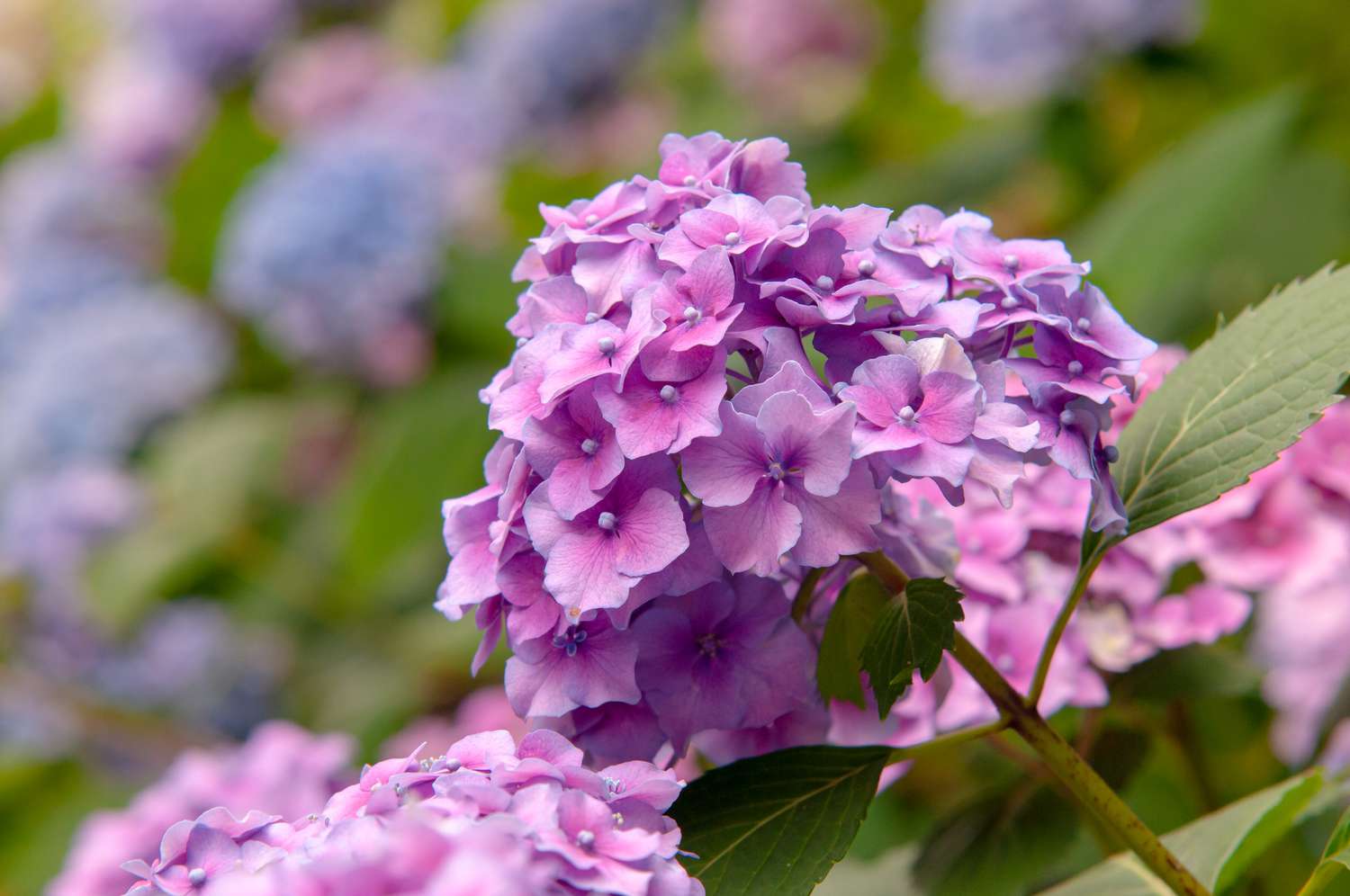
H. macrophylla (H. hortensia, H. opuloides): French Hydrangea, Big Leaf Hydrangea. Deciduous shrub. Zones US, MS, LS, CS; 9–3. From Japan. Symmetrical, rounded habit, grows to four to eight feet high (or more) and as wide. Thick, shiny, coarsely toothed leaves to eight inches long with white, pink, red, or blue flowers in big clusters. It’s a great performer in areas where winters are relatively mild, disappointing where plants freeze to ground every year (they may never bloom under these conditions since flower buds produce on old wood). Protect in colder zones by mounding soil or leaves over the base of plants. Prune immediately after bloom.
Pruning
To know how to prune hydrangeas, you first need to know its variety. For varieties that bloom on old growth, you should prune in the summer after the final flowering for the season. Varieties that bloom on new growth can wait until winter for pruning or early spring before flowering begins. After flowers fade, prune by cutting back dead wood and choose one or two stems to cut back to the base—this helps encourage new growth. If your hydrangea did not perform as expected during its bloom seasoning, cut back all the stems to the ground (eliminating next year’s bloom), but hopefully revive healthy growth in the following few years. If pruning hydrangeas that bloom on new growth, only remove dead stems.
Propagating Hydrangeas
Propagating hydrangeas is easy to achieve by using cuttings. There are two options for selecting your cuttings: the first is in the spring as new growth emerges, and the second is in winter, so the cuttings will take root and resist the cold weather. Here’s how to propagate hydrangeas using cuttings:
- Select a branch with a few nodes (where the main stem branches off into various leaves, twigs, and buds) and make your cut below the node using sharp pruning shears.
- Remove the lower leaves on this cut, so the branch does not exhaust all its energy. Keep a few leaves on top.
- Place the branch’s tip (lower half) into a planting hormone.
- Plant the stem and other cuttings into a tall container (at least eight inches deep) filled with potting soil.
- Cover the container with a bag, leaving air openings so it can breathe, and be careful not to touch the plant cuttings with the cover.
- Keep the container in a shaded area while watering the soil so it’s moist but not soaked for two to four weeks.
- After roots form, transplant cuttings to their final location.
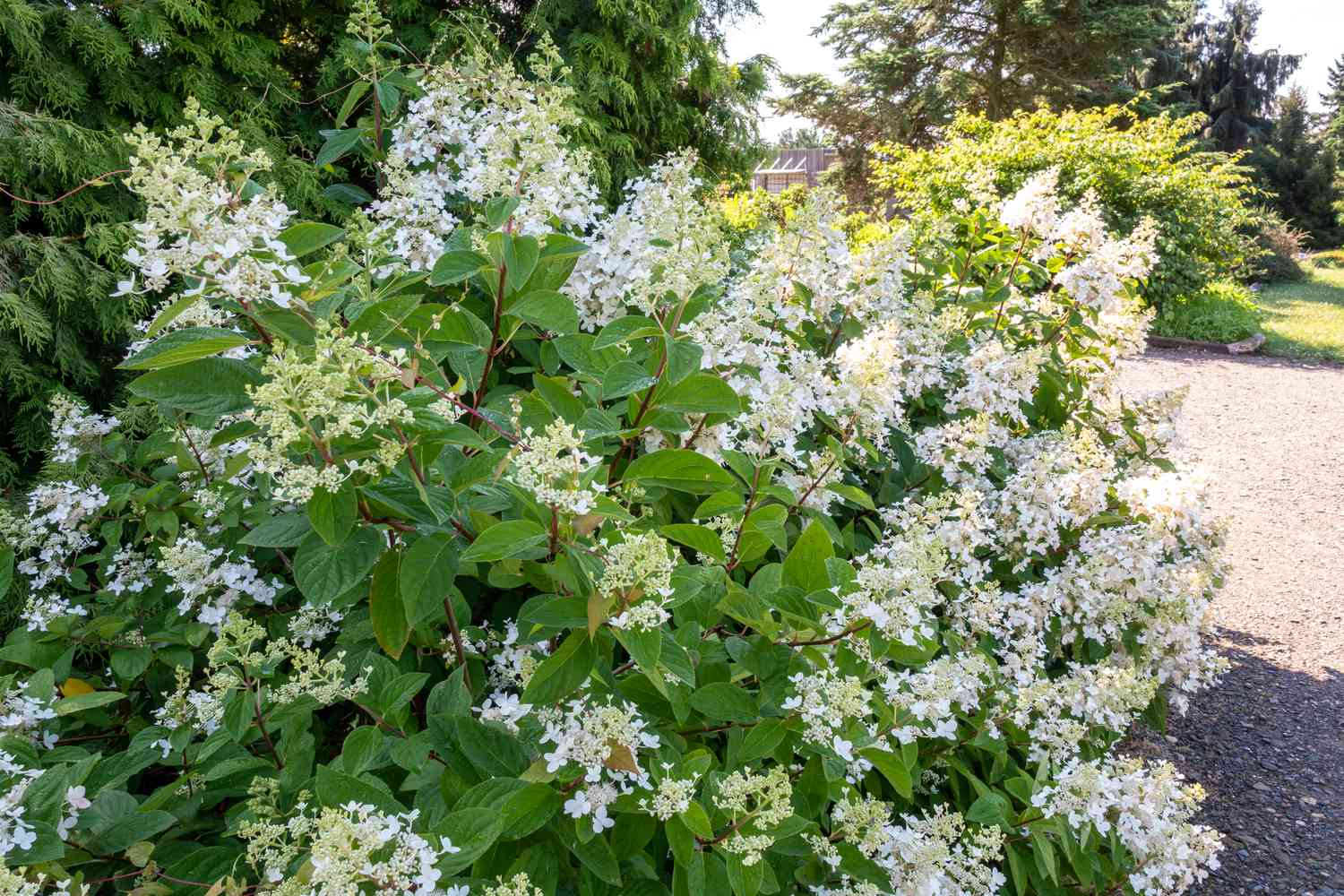
How to Grow Hydrangeas From Seed
- Start by selecting seeds. (It’s important to know that they will not be exact clones of their parent plants as each hydrangea is unique.)
- Once you have seeds, from harvesting your own or purchasing some at a garden supplies store, you should sow them immediately or keep them in a cool, shaded area.
- Next, place seeds in a container filled with organic potting soil. Only bury these seeds just below the top soil line.
- Place the container in partial to direct sunlight. Keep the soil moist for around two weeks until sprouts develop.
- Transplant the hydrangea after the roots form to where you want to grow it permanently.
Overwintering
In areas susceptible to frost damage, you can do a few things to help protect your hydrangeas throughout the winter. First, cover hydrangeas with burlap or similar tarp to prevent snow, ice, or high winds from breaking hydrangea branches. You can remove this burlap once new buds form.
A second way to protect hydrangeas is by mulching around the roots. Use wood chips or leaves around the base of the plant to help protect it from temperature changes. Once spring arrives, and the risk of drastic temperature drops has passed, you can remove the mulch, but be mindful not to dig up the roots.
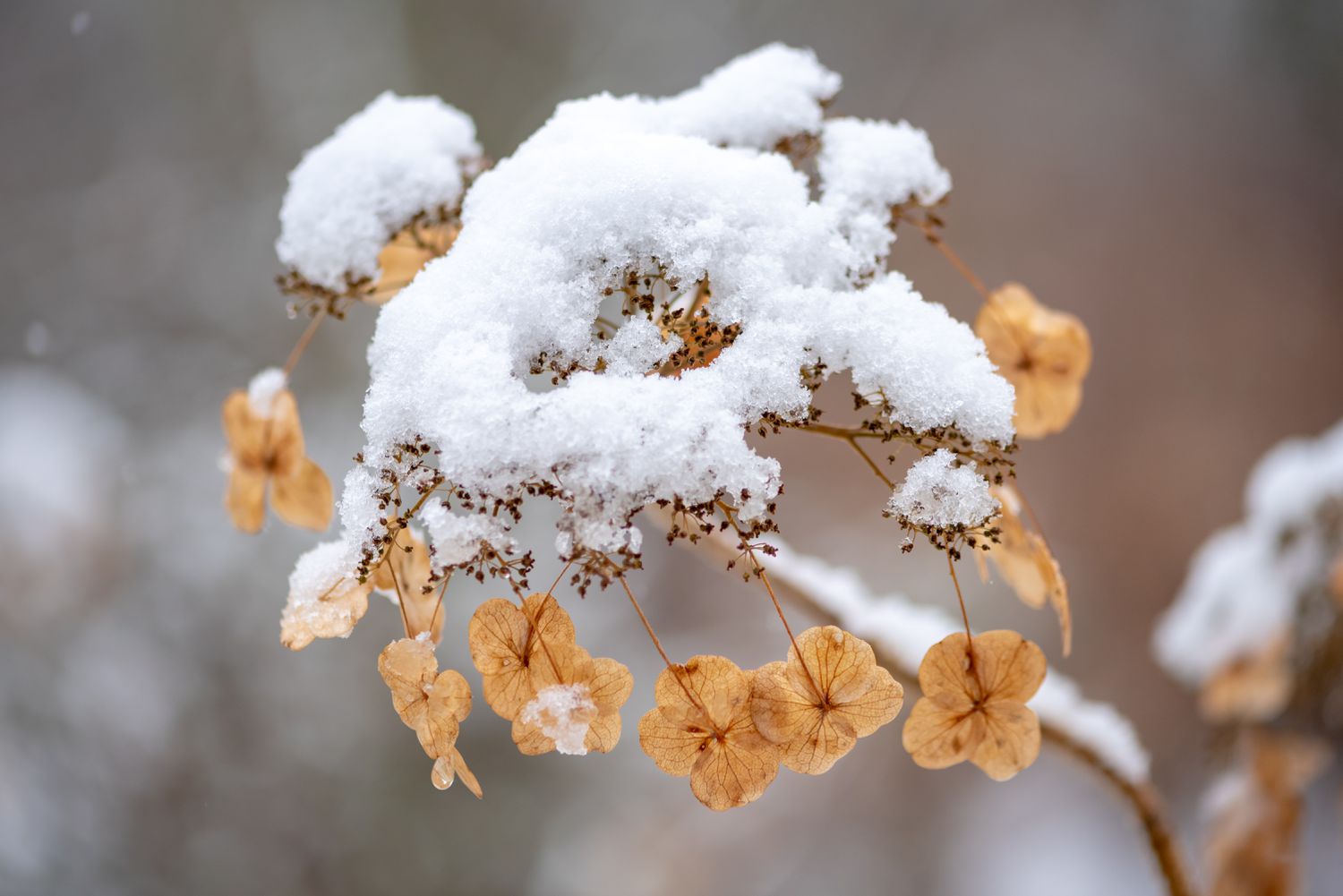
Common Pests & Plant Diseases
Hydrangeas rarely have a pest issue but can develop a problem when the plant is stressed and not receiving proper sunlight and watering. Common pests include aphids, red spider mites, and Japanese beetles. Treat this with insecticidal soap.
Also, hydrangeas are susceptible to powdery mildew, leaf spot, and wilting. Fungicides can cure most issues if you notice a change in the hydrangea’s leaves, such as a yellow or brown coloring or spotting.
How to Get Hydrangeas to Bloom
There are several reasons why your hydrangeas might not bloom, but here are some common issues and what to do to fix them: Pruning at the wrong time can result in you unknowingly removing next year’s blooms. Only remove dead branches after flowering is finished and check the hydrangea variety to know whether it blooms on new or old growth. Hydrangeas require a lot of water but never soak it too much as the roots can develop diseases, and the blooms will not appear as prolific. Sunlight should also be balanced carefully, with direct sun and shade in the afternoon. Also, to improve the likelihood of showy blooms in spring, don’t ignore the final frosts of the winter season. If one of these late frosts gets on the new hydrangea buds, it can prevent it from flowering. In this case, keep shrubs covered.

Common Problems With Hydrangeas
Curling Leaves
Curling leaves does not always signify a problem. Hydrangeas will instinctively curl leaves when trying to protect themselves from extremely high temperatures. This wilting should return to healthier-looking leaves in the evening after the sun goes down. Not enough water is also sometimes why leaves might curl on hydrangea plants. If the top few inches of soil are dry, it is time to water your plants.
Leaves Turning Yellow
Yellow leaves indicate that something about your hydrangea care is out of balance. If the roots are soaked, try drying them out. If the base is too dry, adding water and fertilizer might help revive them.
Leaves Turning Brown
Brown leaves signify that there is an imbalance in soil composition. Often this means that you fertilized too much, so correct this by watering and ideally removing excess nutrients.
